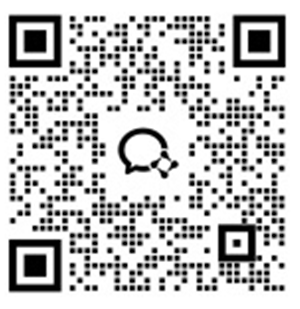

In today's fast-paced digital world, businesses rely on mobile applications to drive engagement, sales, and brand recognition. With iPhones holding a significant share of the global smartphone market, ensuring flawless app performance on iOS devices is critical for success. Poorly tested apps can lead to crashes, negative reviews, and lost revenue. This guide explores the importance of iPhone testing, essential test types, key tools, and how Redfinger’s cloud-based solution can streamline testing for businesses.
iPhone testing is a crucial step in the app development cycle, ensuring that applications run smoothly across different iOS versions and device models. Here’s why businesses must prioritize iPhone testing:
User Experience Matters – Apple users expect seamless, fast, and error-free experiences. Any glitch can lead to negative feedback, reducing app credibility.
iOS Fragmentation – While Apple has a controlled ecosystem, different iPhone models and iOS updates introduce variations that must be tested for compatibility.
App Store Guidelines – Apple has stringent app submission guidelines. Testing ensures compliance, preventing rejection and delays.
Security and Performance – iPhones are known for strong security protocols. Apps must undergo rigorous testing to maintain data security and high performance.
Business Reputation & Revenue – Apps that function smoothly lead to higher user retention, positive ratings, and increased revenue.
To ensure a seamless user experience, businesses must conduct comprehensive iPhone testing. The following tests are essential:
1. Functional Testing
Validates core app functions such as login, navigation, and feature performance.
Ensures that buttons, menus, and links work correctly.
2. UI/UX Testing
Checks app responsiveness and visual consistency across different iPhones.
Ensures intuitive navigation and adherence to Apple’s design standards.
3. Compatibility Testing
Verifies app performance across various iPhone models (e.g., iPhone 12, iPhone 15) and iOS versions.
Ensures backward compatibility for older devices still in use.
4. Performance Testing
Analyzes loading times, response speeds, and battery consumption.
Ensures optimal memory usage and stability under different network conditions.
5. Security Testing
Identifies vulnerabilities and protects user data from breaches.
Ensures compliance with Apple’s privacy policies.
6. Automation Testing
Utilizes scripts to test repetitive functions, reducing manual effort.
Helps speed up regression testing before every update.
7. Network & Connectivity Testing
Ensures app stability under different network conditions (Wi-Fi, 4G, 5G).
Checks for issues with offline mode functionality.
Several tools can help businesses ensure their apps perform seamlessly on iPhones. Here are some of the best options:
Xcode
Apple’s official IDE for iOS app development and testing.
Provides an iPhone simulator for early-stage testing.
TestFlight
Apple’s beta testing tool that allows developers to distribute apps to testers before release.
Offers insights on bugs, crashes, and user experience.
Appium
Open-source automation tool for iOS and Android.
Supports cross-platform testing and integrates with popular frameworks.
Calabash
Enables automated UI testing for iOS apps.
Helps in writing behavior-driven test cases.
BrowserStack & Sauce Labs
Cloud-based platforms offering real device testing.
Supports testing on multiple iOS versions and devices.
As mobile applications continue to evolve, businesses need efficient and scalable testing solutions. Traditional device testing can be time-consuming and costly, but cloud-based platforms like Redfinger offer a streamlined approach to enhance testing efficiency and reduce overhead costs.
Redfinger is a leading cloud-based solution that enables remote access to Android and iOS environments. Designed for businesses and developers, Redfinger eliminates the need for physical devices, offering a scalable and cost-effective way to test mobile apps efficiently.
Using Redfinger cloud-based mobile devices, businesses can significantly improve the efficiency of iPhone testing, particularly in multi-platform and multi-device compatibility tests. Here’s a step-by-step guide:
Register and Log in to Redfinger
Visit the Redfinger website and download the appropriate version based on your operating system.
Windows users can install the client and register using an email address.
Mac users can access Redfinger via a browser and register using Google, Facebook, LINE, or an email address.
Select Device Configuration
Log in to the cloud mobile management interface and select the desired device configuration based on project requirements.
Choose suitable hardware specifications (RAM, CPU, etc.), operating system versions, and server locations (such as the US, Singapore, or Taiwan).
To apply for a free trial, please contact our Telegram account: @redfingercp or visit https://t.me/redfingercp.
Launch and Operate the Device
Select the required test device and click the “Start” button to launch a virtual iPhone.
Use remote access to install apps, launch applications, and simulate user interactions.
Batch Management and Testing
Redfinger supports batch device management, allowing multiple tests to be conducted simultaneously.
Execute automation test scripts to validate app compatibility, performance, and stability.
Remote Monitoring and Real-Time Feedback
Use Redfinger’s real-time monitoring features to track CPU usage, memory consumption, and network performance.
If issues arise, immediately make remote adjustments or pause testing as needed.
By following these steps, businesses can leverage Redfinger’s cloud-based mobile devices to create a flexible iPhone testing environment, enhance efficiency, cut costs, and ensure seamless app performance.
For insights on optimizing app performance, check out this guide on Android speed testing.
iPhone testing is a vital step for ensuring app success, user satisfaction, and business growth. By conducting essential tests, using reliable testing tools, and leveraging cloud-based solutions like Redfinger, businesses can streamline their testing processes while reducing costs. Whether you are a developer, QA engineer, or business owner, prioritizing iPhone testing will lead to higher app quality, better user retention, and improved revenue.
iPhone testing ensures compatibility, performance, security, and compliance with Apple’s guidelines, leading to a seamless user experience and better business outcomes.
Functional testing, UI/UX testing, performance testing, security testing, and compatibility testing are essential for optimal app performance.
Redfinger offers cloud-based device access, one-click testing, multi-instance execution, and scalable testing environments, reducing costs and improving productivity.
Yes, Redfinger supports automation testing by integrating with popular frameworks, enabling efficient and scalable test execution.
Redfinger offers flexible pricing models based on usage. Businesses can choose a plan that fits their testing needs without the expense of physical devices.